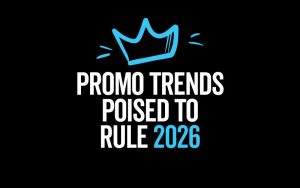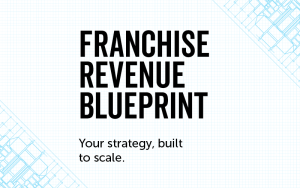Welcome to 2025! The ball has dropped, the strains of “Auld Lang Syne” have faded, and now it’s time to roll up your sleeves and tackle the big task ahead: your marketing goals. But let’s face it – setting the right goals can feel as elusive as finding a parking spot during the post-holiday return rush. If you’re struggling to kick things off, don’t worry – SMART goals are here to turn your marketing plans into a masterpiece that’s both actionable and achievable.
What Are SMART Goals?
Here’s the thing: marketers who set goals are 376% more likely to report success than those who don’t. Of those marketers, 70% actually hit their targets. So, what separates the goal-getters from the dreamers? SMART goals – a handy acronym that ensures your ambitions are Specific, Measurable, Attainable, Relevant, and Time-bound. Let’s break it down.
S Is for Specific
A vague goal is like a joke with no punchline. It just leaves things unfinished. Instead of saying, “I want more website traffic,” ask yourself: What am I really trying to achieve? A specific goal could be:
Increase website traffic by ramping up social media efforts.
By being clear about what you want to achieve, you set a solid foundation for action.
M Is for Measurable
If you can’t measure it, how will you know you’ve made progress? Numbers don’t just give you a target; they keep you motivated. For example:
Increase website traffic by 25% by ramping up social media efforts and assessing performance monthly.
Adding metrics gives you the tools to celebrate success or pivot if needed.
A Is for Attainable
Dream big but keep your feet on the ground. If your current blog traffic grows by 2% a month, expecting a 100% increase might be wishful thinking. Instead, aim for something within reach, like:
Increase website traffic by 25% by publishing 3 posts weekly on the major social platforms and reviewing results monthly.
The best goals are ambitious yet realistic.
R Is for Relevant
Your goals should tie back to a larger purpose. Ask yourself: Why does this matter? For example:
Increase website traffic by 25% to boost inbound marketing and generate more qualified leads.
When your goals align with your broader objectives, you’ll stay motivated and focused.
T Is for Time-Bound
A goal without a deadline is just wishful thinking. Break your goals into manageable chunks with clear timelines, such as the following:
Increase website traffic by 25% by Q1 2026, hitting quarterly benchmarks of 5% growth along the way.
Setting a timeframe keeps you on track and gives you opportunities to refine your strategy.
How SMART Goals Work in Real Life
Let’s transform a vague goal into a fully formed SMART masterpiece. Remember, we started with:
“Increase website traffic.”
Now it looks like this:
Increase website traffic by ramping up social media efforts (Specific) to boost inbound marketing (Relevant) by 25% (Measurable) by the end of Q1 2026 (Time-Bound) by publishing three posts weekly in each social media platform (Attainable), evaluating results monthly.
Voila! You’ve just created a clear, actionable roadmap.
Related: Top Trending Lead Funnel Strategies
How to Use SMART Goals to Craft Your 2025 Marketing Plan
SMART goals are powerful, but they don’t exist in isolation. They need to align with your company’s overarching objectives. Here’s how to make that happen.
Step 1: Identify Business Objectives
Start by understanding where your business is heading. Long-term objectives like “Become an industry leader by 2028” give you a North Star, while short-term goals like “Increase revenue by 15% in 2025” provide actionable milestones. Distinguish between what’s achievable now and what needs more time, so you can prioritize effectively.
Step 2: Set Priorities
Not all goals are created equal – your time and budget have limits. Focus your resources on areas where they’ll have the biggest impact. For example, if increasing revenue is a top priority, your website traffic goal should directly contribute to lead generation.
SMART Example:
“Increase website traffic by 25% to drive a 10% increase in qualified leads by Q1 2026.”
Step 3: Align Goals With Strategy
Alignment is where the magic happens. Ask tough questions about your goals:
- What percentage of website visitors convert into buyers?
- How many new leads do you need to hit revenue targets?
- Is inbound website traffic the best tactic, or should you consider a downloadable eBook, social media ads, or a print campaign?
By connecting SMART goals to tangible outcomes, you’ll build a marketing plan that supports your company’s bottom line.
Related: Top 12 Hacks to Win at the Social Media Marketing Game
Ready to Kick Off Your 2025 Marketing Plan?
Setting SMART goals is just the beginning. To make them a reality, you’ll need tools, insights, and expertise. That’s where Ironmark comes in. From data-driven digital marketing strategies to print campaigns, we’ll help you stay on track and meet your objectives. Whether you’re aligning business objectives or looking for fresh ideas, Ironmark is here to help you succeed. Let’s simplify your success with SMART goals and make 2025 your best year yet!




